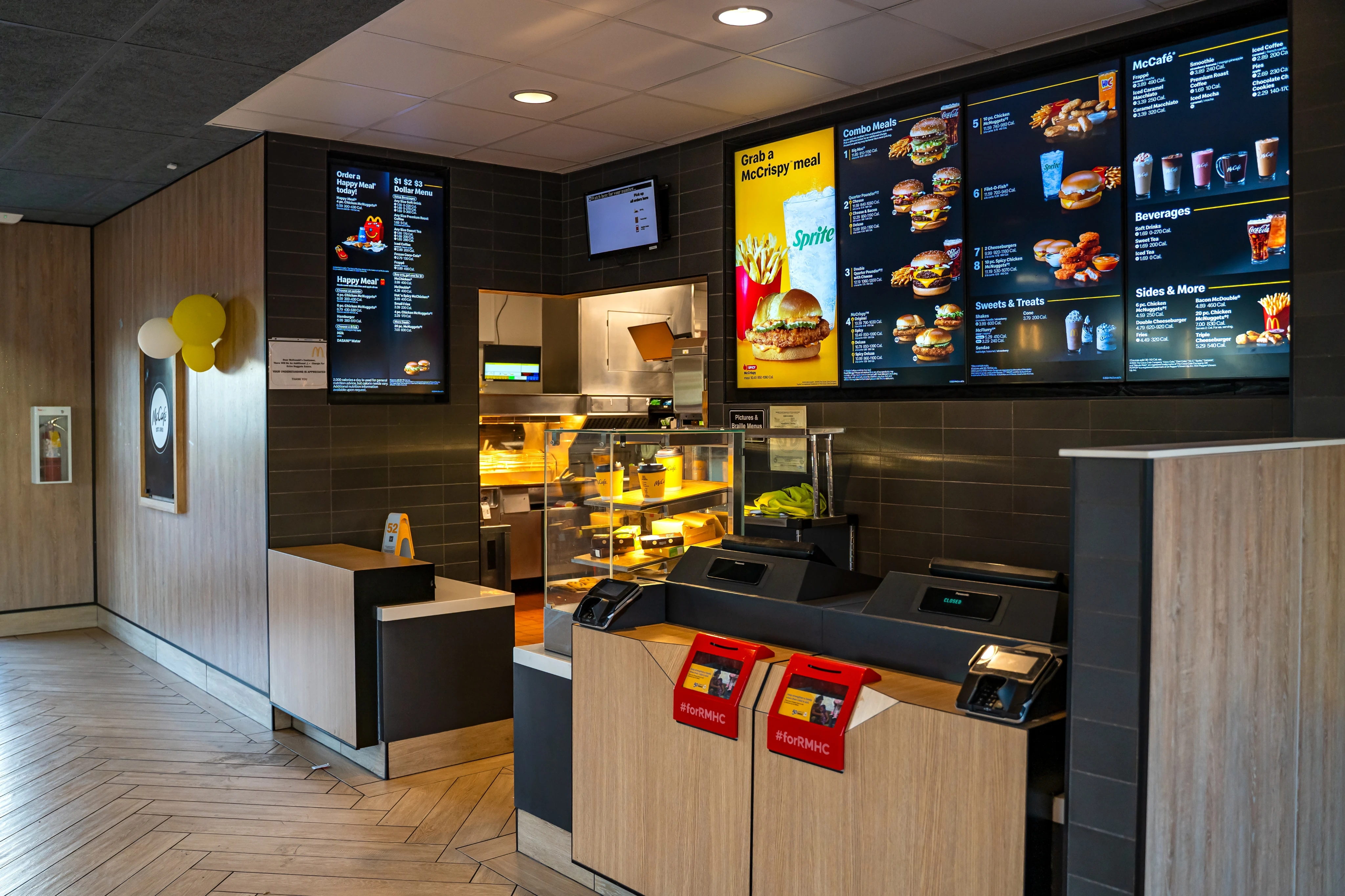Let's take a look at real-world examples of global brands such as Stabucks, Netflix, and McDonald's, and the comparison between buying products and investing in stocks of these companies.

Impact of inflation
If we left 5,000 EUR without investments, their real value would fall due to inflation. According to official Eurostat data, the average annual inflation in euro area over the last 5 years was as follows:
2020 – 0,3 %
2021 – 2,6 %
2022 – 8,4 %
2023 – 5,4 %
2024 – 2,4 %
The calculated real value of this money after 5 years would be 4 182 EUR. Inflation would therefore have reduced purchasing power by 818 EUR over the period.
Investing in McDonald's Stock
If we invested 5,000 EUR in McDonald's shares in March 2020 instead of holding money, their value would develop as follows:
In March 2020, McDonald's stock was trading at around $180 a piece.
At an exchange rate of 1.10 USD/EUR, we could buy 30 shares for 5,500 USD.
In March 2025, the stock was trading at around $307.33 apiece.
The total value of our 30 shares would therefore be $9,219.90.
At an exchange rate of 1.05 USD/EUR, this would amount to 8 780 EUR.
Buying 30 McDonald's shares
5 000 EUR
Investment value after 5 years
8 780 EUR
Investment value after 5 years: 8 780 EUR compared to the loss of purchasing power by 818 USD.

Cost of Weekly Coffee at Starbucks
Average price of coffee: Suppose the average price of a single coffee at Starbucks is $5.
Number of weeks in 5 years: 5 years × 52 weeks = 260 weeks.
Total cost: 260 weeks × $5 = $1,300.
Investing in Starbucks stock:
Stock price 5 years ago: According to available data, Starbucks stock price was around $59 in March 2020.
Number of shares for $1,300: $1,300 ÷ $59 ≈ 22 shares.
Current share price: As of March 19, 2025, Starbucks stock price is approximately $99.
Investment value today: 22 shares × $99 = $2,178.
Coffee costs incurred
$3 300
Investment value after 5 years
$4 178
Item |
Total (USD) |
Total Cost of Coffee |
1300.0 |
Initial investment in stocks |
1300.0 |
The value of the investment today |
2178 |
Total Profit |
878 |
This simple example shows that an investment in Starbucks stock would yield an appreciation of approximately $878 over the past 5 years, an increase of 67.5%.
Of course, the regular pleasure of coffee has its value, but from a financial point of view, investing in company shares can be more profitable. When deciding between immediate consumption and long-term capital appreciation, it is important to consider your financial goals and preferences.

What are the real numbers?
In 5 years, you'd pay around $1,055 for a Netflix premium subscription.*
If you were to invest in 3 Netflix shares instead, your initial investment would be $996. Today, that investment would be worth $1712! This means that you would earn $2,985 in net profit – and still have assets that can grow further. **
Item |
Total (USD) |
Initial investment in 3 stocks |
996.0 |
The value of the investment today |
2708.0 |
Total Profit |
1712.0 |
Total cost of Netflix subscription |
1055.28 |
Incurred subscription costs
1 055 USD
Investment value after 5 years
2 708 USD
Passive consumption vs. active investing
The subscription is convenient, but it does not bring you anything but an instant experience. Conversely, investing in stocks means that your money works for you and creates long-term growth. Which one is better? Pay Netflix every month and have nothing at the end of the year? Or own a part of Netflix and make money from its growth?
Small changes, big results
You don't have to invest thousands right away. All you have to do is learn how to allocate money wisely – for example, instead of one subscription per month, invest the equivalent of its price in quality stocks or ETFs.
*The following average monthly prices in USD were used to calculate the total cost of Netflix subscriptions over the past 5 years:
2019: $12.99
2020: $13.99
2021: $13.99
2022: $15.49
2023: $15.49
2024: $15.99
The total cost was calculated as follows:
(12.99×12)+(13.99×12)+(13.99×12)+(15.49×12)+(15.49×12)+(15.99×3)=1055.28 USD
(3 months in 2024 are also included)
**The strengthening of the share price results from official data on the development of Netflix's value on the stock exchange as of 3/19/2025, when the share price was $929, and on the same date 5 years ago, when it was at $332.
What is more advantageous?
When comparing all 3 scenarios, the answer is clear: investing in stocks yielded better results than leaving money idle or spending it on subscriptions or coffee.
Of course, investing carries risks – the value of stocks can fluctuate and past developments do not guarantee future returns. In the long run, however, high-quality joint-stock companies have historically delivered higher returns than inflation.
How to protect yourself from inflation?
If you don't want inflation to "evaporate" away at your savings, consider investing in assets that have the potential to grow faster than inflation. One option could be stocks of large and stable companies such as McDonald's, Netflix, Starbucks, and others. Additionally, there are other investment vehicles such as ETFs, real estate, or bonds that can help protect your finances from depreciation. Keeping money in cash is not an option if you want to protect your assets in the long run.

Do you want to finally be clear about finances? Contact us for a free consultation with an expert who will be happy to guide you through the entire process – from understanding basic financial concepts to gaining insight into the setup of your personalized investment goals.
- No unnecessary complications.
- No pressure.
- Only expert advice that makes sense to you.
Name is required
Please, enter your name
{{ errors.name[0] }}
Email is required
Please enter a valid email address
{{ errors.email[0] }}
Phone is required
Please, enter your phone
{{ errors.phone[0] }}
Message is required
Please enter your message
{{ errors.message[0] }}
Terms are required
{{ errors.terms[0] }}
Too many requests. Please try again later
Something went wrong. Please try again later
We received your email!
We will contact you as soon as possible!

